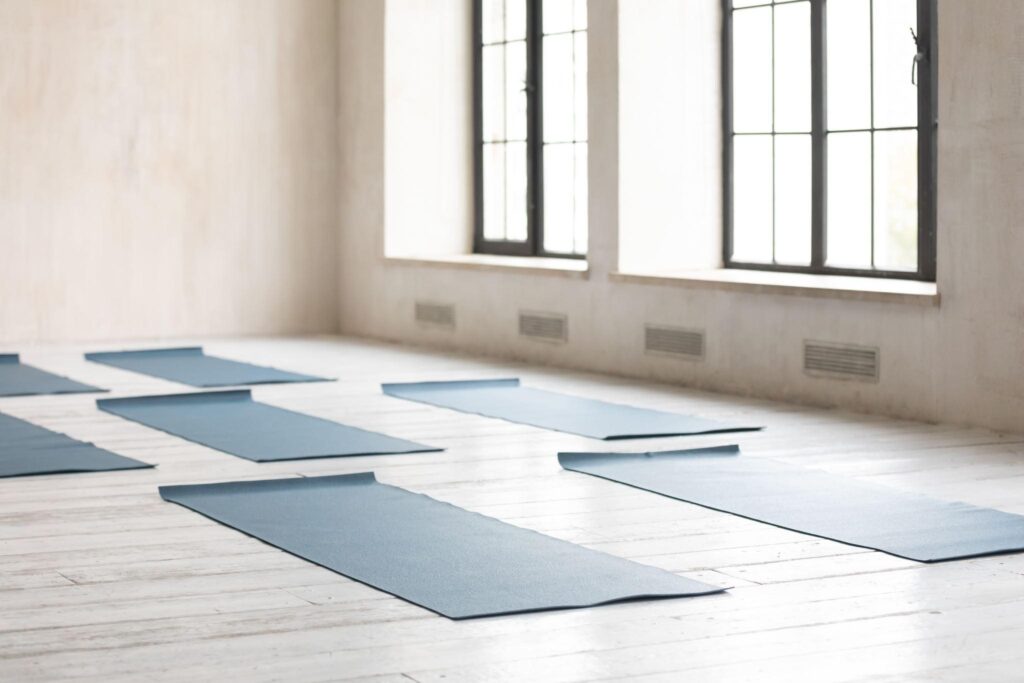patanjaliyogafoundation Exercises designed to alleviate lower back pain in seniors can be helpful for those experiencing Temporomandibular joint dysfunction, commonly known as TMJ or TMJ Syndrome. TMJ Syndrome is a common issue affecting the jaw joint that connects the jawbone to the skull, and not everyone experiences it. Typical TMJ dysfunction symptoms consist of jaw discomfort, jaw clicking or locking, and difficulties with chewing. When the pain becomes more pronounced, seeking professional care becomes crucial for pain relief. In the meantime, these TMJ exercises may offer some relief while you work on developing an effective treatment plan.
Yoga for Neck Pain and TMJ Relief:
Yoga offers effective methods for alleviating neck pain and addressing TMJ issues. To begin with, specific yoga postures can aid in correcting head misalignment by promoting upward and backward positioning.
Habits such as constantly looking down at electronic devices like computers, tablets, or cell phones can lead to a forward head posture, which places excessive strain on the neck muscles, potentially resulting in muscle tension. This information is based on a review from December 2019 in “Current Reviews in Musculoskeletal Medicine.”
The neck muscles, including the sternocleidomastoid (a lengthy muscle band extending from the base of the skull to the sternum), play a crucial role in supporting the jaw joint. When these muscles become tense and contracted, it can lead to referred pain and tension in the TMJ. Engaging in yoga poses that focus on stretching and Alleviating this tension and discomfort can be beneficial through the engagement of neck and shoulder muscles patanjaliyogafoundation.
Moreover, it also addresses specific Exercises for Lower Back Pain for Seniors.
Tongue movement exercise:
This simple technique can provide immediate relief for TMJ pain. Begin by opening your mouth as wide as you can, then guide your tongue toward the roof of your mouth, directing the tip of your tongue towards the area near your tonsils. While moving your tongue towards the back of your mouth, gently explore the roof of your mouth with the tip of your tongue to find a soft spot. Once you’ve located this spot, apply gentle pressure with the tip of your tongue for 5 seconds. Afterward, extend your tongue as far as possible outside your mouth and hold for 5 seconds. Repeat this sequence five times.
Chin pressure exercise:
This following technique can alleviate discomfort and pressure without requiring any equipment. To begin, position your thumb beneath your chin and gently exert upward pressure. Then, while maintaining this pressure against your chin, open your mouth and hold for 5 seconds. Close your mouth and repeat this sequence. Consider it a form of resistance training for your jaw.
The Locust Pose:
The Locust Pose incorporates lying on your stomach while clasping your hands behind your back, promoting the stretching of the entire front body, particularly the chest, shoulders, and front of your neck.
Including a chin tuck in this pose could aid in the realignment of the jaw. It’s crucial to ensure you’re not unintentionally tensing your jaw muscles while performing the pose.
Pen in mouth exercise:
The “pen in mouth” exercise is a straightforward technique for alleviating TMJ syndrome-related discomfort. To start, you’ll require a pen, pencil, or an object with a comparable diameter. Hold the item near your mouth, positioning it as you would with a piece of corn on the cob. Insert it between your teeth and gently shift your jaw from side to side, holding for 10 seconds on each side. As your TMJ strength improves, repeat this exercise using larger items like a marker patanjaliyogafoundation.
Widen your jaw:
To perform this exercise, start by opening your mouth as far as is comfortable. Then, place your hand on one side of your jaw and gently exert pressure in a sideways direction. This pressure will encourage your jaw to move toward your hand’s force. Maintain this position for 10 seconds, then repeat the process on the other side of your face. These movements stretch the TMJ and provide relief from any tension or discomfort you might be feeling.
Conclusion: In conclusion, these five simple yoga poses can be incredibly effective in alleviating TMJ pain and discomfort. By addressing the tension in the jaw and promoting better alignment, these exercises can help you find relief. Just as there are targeted exercises for lower back pain for seniors, it’s reassuring to know that there are specific yoga techniques to address the unique challenges of TMJ issues. Whether seeking to release jaw tension or manage lower back pain, yoga offers a holistic approach to enhancing overall well-being. So, remember to explore these poses with patience and consistency, as they can play a crucial role in improving your quality of life and well-being patanjaliyogafoundation.



